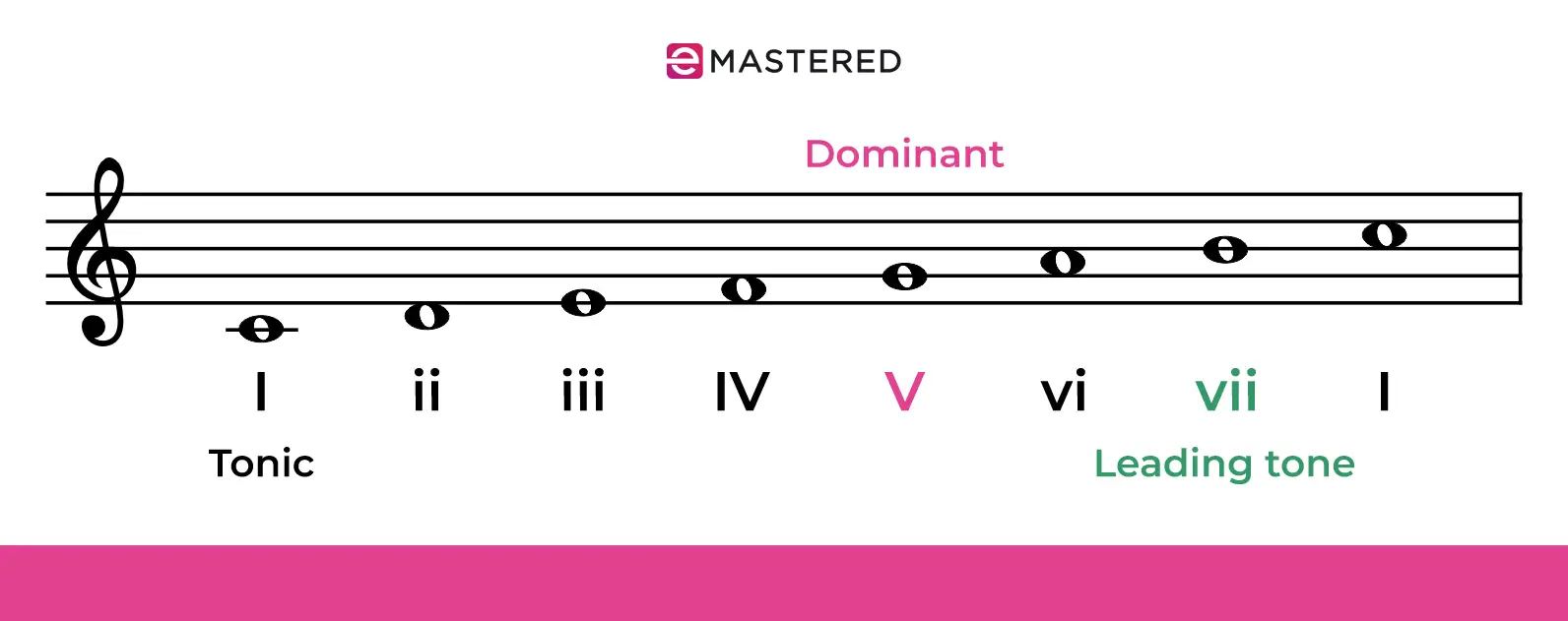There are a surprising amount of musicians that don't understand music theory - and who can blame them? Learning complicated theory concepts isn't the most exciting part of the creative process by any means, though it can dramatically improve your skillset if you're willing to put your knowledge into practice.
In this guide, we'll decode one of the most commonly misunderstood concepts of music theory: the art of the secondary dominant chord.
What are Secondary Dominant Chords?
Secondary dominant chords are major chords or dominant seventh chords that help resolve to a chord that's not diatonic to the original key of the song. This sounds more confusing than it actually is: a secondary dominant chord acts as a bridge into a new key that is different from the rest of a song, typically as a part of a transition of some sort.
There are 5 secondary dominant chords in any major key. Each secondary dominant chord moves down a perfect fifth degree to create a non-tonic chord. It's often referred to as "five of five" or "V of V" chord since the secondary dominant is the 5 of the non-tonic chord.
For instance, in a C major chord progression, if you attempted to move from I vi V/V (this is the secondary dominant) V, you would have C Am D major G. The D major chord is not native to the C major scale and acts as the V chord of G major, which sets you up to modulate from a C major scale to a G major scale should you have the desire:
What Does "Dominant" Mean?
The fifth chord degree or the V chord of a progression is typically referred to as "the dominant". We often use a dominant seventh chord as the secondary dominant, since the 7th scale degree acts as a leading tone into the resolving diatonic chord. The secondary dominant chords help serve as portals between a diatonic scale and the native key of a composition.

Why Would You Use a Secondary Dominant Chord Progression?
These are a couple of scenarios in which a secondary dominant chord progression can make a big difference in your composition:
- Modulating to a new key : Secondary dominants are ideal for transitioning to a new key because the tension is resolved (in most cases) momentarily following the secondary chord. Songs with key changes often have a secondary dominant as part of the bridge to a new key.
- Defy listener's expectations: You'll find that certain genres like jazz, r&b, and others often employ secondary dominants for their unique sonic quality alone. These borrowed chords can peak a listener's interest and keep things interesting over the course of a song.
- Building tension: Secondary dominants introduce tension into tracks which can be useful for the overarching rise and fall of a composition. The added tension can help add to the satisfying resolution that comes from the diatonic chord.

The Dominant Seventh Chord vs. Secondary Dominant Chord: What's the Difference?
You'll often hear the terms "dominant 7th chord" and "secondary dominant chord" used interchangeably: these terms are similar, and somewhat related but it's key to understand the ways in which they are different. Essentially, a secondary dominant chord can be a dominant 7th chord, but it doesn't have to be.
A dominant 7th chord simply refers to a dominant chord (or a V chord) that has an added 7th scale degree. Secondary dominants are often dominant seventh chords because the added 7th scale degree acts as a helpful leading tone into the modulated tonic chord following the secondary dominants. In other words, the seventh scale degree is helpful, but not vital to solidifying the transitional magic behind a secondary dominant: the same could be achieved with just a V chord and the 7th scale degree.
How to Build Secondary Dominant Chord Progressions
Let's put your new knowledge to good use! Here is how to build secondary dominants into your chord progressions:
To start, identify the final chord you wish to resolve to. This chord can not be the tonic chord of your progression, but it should exist in the key of your track.
Next, identify the dominant of that chord, or the fifth or V chord in its native progression. For example, the V chord of the C major scale is G major.
You now have a secondary dominant chord. For extra tension, make the dominant chord a dominant 7th chord (add a minor seventh to the triad). Now, you can play the secondary dominant and resolving chord in succession for a temporary modulation in your track.
Secondary Dominant Chord FAQ
Understanding secondary dominants can take some getting used to. Here are some commonly asked questions and answers to help you master this sometimes confusing concept:
What does a secondary dominant chord do?
A secondary dominant chord serves as a bridge between the current key of a chord progression, used to transition into a new temporary key, or the tonic chord of the key. Essentially, a secondary dominant is the V chord (or dominant chord) of a chord other than the preceding tonic chord.
How do you set a secondary dominant chord?
Start by determining the final chord you wish to resolve to. Then, find the primary dominant (the five chord) of this diatonic chord you'll be transitioning to. Finally, add the seventh to this V chord to create a dominant 7th chord, which can help lead into your diatonic chord. In G major, you could move from G to A7 to D7, with A7 serving as the secondary dominant seventh chord, or five of five.
What is the secondary dominant chord of F major?
The secondary dominant chords of F major are A7, E7, G7, and F7. Each of these chords include a note that is not within the native key of F major, but can be resolved to a native chord within the F major key.
What are examples of secondary chords?
Secondary dominant chords can be any chord built on any scale degree other than the V chord. So, in the key of C major, the secondary dominant chords (in this case, each is a seventh secondary chord due to the added 7th) would be C7, D7, E7, F7, A7, and B7.
When should I use secondary dominants?
You should use secondary dominants during the bridge of a song, outro, or in any section where you'd like to add some interest. Adding the seventh scale degree can also help make the transitions more natural since the 7th resolves to the following tonic in secondary dominant chord progressions.
Do secondary dominants have to resolve?
While it's common for secondary dominant chords to resolve, it's not a requirement for the subsequent chord. Learning how to identify secondary dominants as showcased above can help you identify secondary chords even outside of their predicted context.
Hence, secondary dominant chords are powerful tools that can be used to add character and tension to your compositions. Enjoy using your new understanding of both secondary chord and subdominant chord placement to enhance your compositions.





